Most of the Central Florida Livestock Agents (CFLAG) are quite familiar with the annual gathering at Deseret Ranch in Osceola County known as Beef Reproduction School. The old timers tell me that UF has been a part of hosting this program for nearly a quarter of a century. 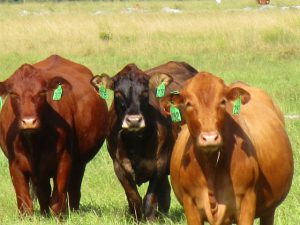 But for me it was a first, and I’d like to share a typical day at Repro School. The 2018 Beef Reproduction School was attended by 27 participants from Kansas to Florida. We met at the cattle pens (Unit 2) at 8:00AM in the proper clothing attire – for me that was an old t-shirt, a pair of jeans and rubber boots. Deseret cowboys had assembled nearly 80 head of cattle and the instructors were responsible for funneling them into five different chutes, one-by-one on an “as-needed” basis. Once the cow or heifer was secure in her breeding box, I dressed my left arm with a plastic glove up to my shoulder. I clipped on my glove with some handy-dandy close pins, added some lubrication and then went exploring in the cow’s rear end.
But for me it was a first, and I’d like to share a typical day at Repro School. The 2018 Beef Reproduction School was attended by 27 participants from Kansas to Florida. We met at the cattle pens (Unit 2) at 8:00AM in the proper clothing attire – for me that was an old t-shirt, a pair of jeans and rubber boots. Deseret cowboys had assembled nearly 80 head of cattle and the instructors were responsible for funneling them into five different chutes, one-by-one on an “as-needed” basis. Once the cow or heifer was secure in her breeding box, I dressed my left arm with a plastic glove up to my shoulder. I clipped on my glove with some handy-dandy close pins, added some lubrication and then went exploring in the cow’s rear end.
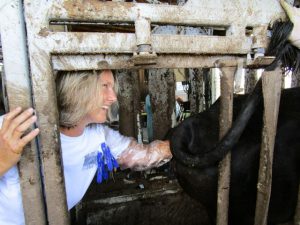
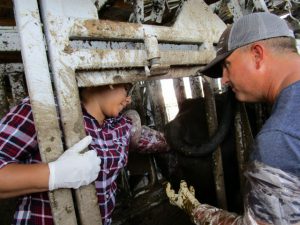
The first goal was to determine if the cow was bred or open using rectal palpation. We had to pass our hand through the anal canal until we could reach into the reproductive tract. Our point of reference was the cervix, which feels kind of like a turkey neck. Upon finding the cervix we were instructed to proceed carefully to the uterine horns and determine if one or the other (or in rare cases both) contained an amniotic fluid-filled sack and/or fetus. Depending on the size of the fetus, we could determine an approximate date of conception – size of a mouse (2 months), size of a small cat (four months) or size of a beagle dog (6 months).
If these cows were bred, then they were on track to meet their goal of breeding calves on a 365-day cycle. If they were open, then we practiced our artificial insemination (AI) technique. We instructed the students how to remove viable sperm from the dry ice and carefully insert the semen into the cervix with the AI gun. 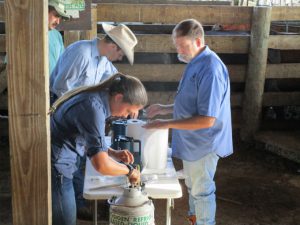 Timing and placement are critical for a successful AI breeding program. After a manure-filled morning, we enjoyed our hot beef lunch under a shaded oak hammock. The afternoon was packed with lectures from UF beef cattle specialists, trained handlers, AI experts and trained veterinarians. By 5:00PM, my head was ready to explode with new knowledge and hands “up” experiences.
Timing and placement are critical for a successful AI breeding program. After a manure-filled morning, we enjoyed our hot beef lunch under a shaded oak hammock. The afternoon was packed with lectures from UF beef cattle specialists, trained handlers, AI experts and trained veterinarians. By 5:00PM, my head was ready to explode with new knowledge and hands “up” experiences.
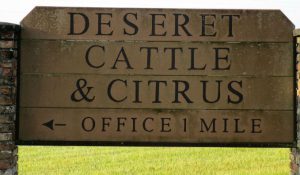
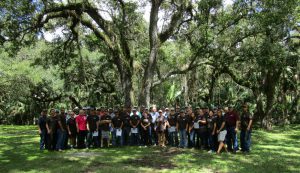
 0
0
